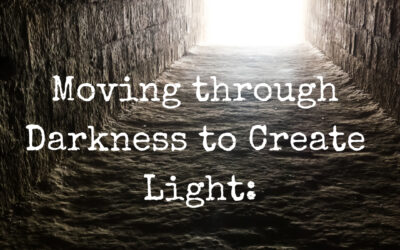We’ve all been there: a friend or family member crosses a line, and we end up feeling drained, overwhelmed, or just plain upset. That, my friends, is what happens when emotional boundaries aren’t in place.
Setting these boundaries is a way of taking care of yourself and your mental well-being.
The best part?
Learning how to set emotional boundaries is something that can improve every relationship in your life—from romantic partners to colleagues, friends, and even that overly inquisitive neighbor!
What Are Emotional Boundaries?
At their core, emotional boundaries are limits you set to protect your feelings and mental space.
They’re about knowing where your emotions end and another person’s begins.
With healthy emotional boundaries, you’re saying, “This is what I need to feel secure, respected, and at peace.”
They’re not about pushing others away—they’re about letting people know how to treat you.
Why do emotional boundaries matter? Because they give us a sense of control over our inner world and help prevent the “emotional hangovers” that happen when people overstep.
Healthy emotional boundaries create room for respect and understanding, which makes relationships feel safe and fulfilling.
Signs You May Need to Set Emotional Boundaries
Not sure if you need boundaries? Here are a few tell-tale signs:
- You feel exhausted after social interactions: If you often feel drained after being around certain people, it could mean they’re overstepping your emotional boundaries.
- You feel guilty when you say no: Guilt can be a red flag. If setting limits makes you feel like you’re doing something wrong, you might need to strengthen those boundaries.
- You take on others’ emotions: Empathy is wonderful, but if you’re absorbing everyone else’s stress, frustration, or sadness, it’s time to step back and protect your own peace.
How to Set Healthy Emotional Boundaries in Relationships
Ready to start creating a little breathing room for yourself? Here are some simple, effective steps to build and maintain emotional boundaries:
1. Identify Your Needs and Limits
Before you can communicate boundaries to others, it’s helpful to understand what your needs are.
Take some time to think about what feels comfortable and what doesn’t. Are there topics you don’t want to discuss? Situations that make you feel uncomfortable? Knowing your limits is the first step to asserting them.
2. Practice Saying “No” with Kindness
The beauty of boundaries is that you can set them without being mean. In fact, a kind “no” is one of the most powerful tools you have.
If someone asks you to do something that doesn’t align with your boundaries, a simple, “I appreciate the invitation, but I’m not able to do that” can go a long way.
Saying no doesn’t mean you don’t care—it means you care about your well-being, too.
3. Use “I” Statements to Express Your Feelings
When setting emotional boundaries, using “I” statements can make the conversation feel less confrontational.
For example, “I feel overwhelmed when we talk about that topic” is a lot easier for someone to hear than “You’re always stressing me out.” This approach keeps the focus on your feelings, rather than making the other person feel blamed.
4. Be Consistent with Your Boundaries
Consistency is key!
Setting a boundary once won’t cut it if you don’t stick to it. If you let people ignore your boundaries sometimes, it sends a message that they’re flexible. Be clear and hold steady—over time, people will learn to respect the boundaries you’ve set.
5. Recognize and Address Boundary Violations
When someone oversteps, it’s okay to address it in the moment. Politely reminding them of your boundary reinforces its importance.
For instance, if a friend dives into a topic you’re not comfortable discussing, a simple, “Can we change the subject? This isn’t something I feel like talking about,” is a gentle way to redirect the conversation.
Common Emotional Boundary Violations (and How to Handle Them)
Now that you’re ready to set boundaries, let’s talk about some common scenarios you might encounter. Recognizing when your emotional boundaries are being crossed can help you protect your well-being.
- Unwanted advice: Some people love to give unsolicited advice. When this happens, you could say, “I appreciate your input, but I’d prefer to handle this my way.”
- Emotional dumping: If someone frequently unloads their issues onto you without considering your emotional space, gently remind them, “I want to be there for you, but I’m feeling a little overwhelmed right now.”
- Guilt trips: If someone tries to make you feel guilty for setting a boundary, it’s okay to stand your ground and reassure them: “I value our relationship, and this boundary helps me be at my best when we’re together.”
The Benefits of Healthy Emotional Boundaries
When you’re consistent in setting and maintaining emotional boundaries, you’ll likely notice some pretty positive changes:
- Increased self-respect: By prioritizing your needs, you’re giving yourself the respect you deserve.
- Better mental health: Emotional boundaries reduce stress, anxiety, and emotional exhaustion.
- More fulfilling relationships: Healthy boundaries create a foundation of mutual respect and understanding.
Remember, boundaries are not about isolation—they’re about creating the space you need to be your best self, which benefits everyone in the long run.
FAQs About Emotional Boundaries
- What are examples of emotional boundaries?
Emotional boundaries can look like politely declining to discuss certain topics, choosing not to take on others’ problems, and feeling comfortable saying “no” to things that don’t serve you.
- How do you set emotional boundaries?
Start by identifying what you need to feel safe and respected, communicate these needs clearly and kindly, and stick to them consistently.
- What is an emotional boundary violation?
This happens when someone disregards your feelings, invades your personal space emotionally, or crosses a line you’ve set. Recognizing and addressing these violations helps reinforce your boundaries.
- What does a healthy boundary look like?
A healthy boundary respects both your needs and the other person’s, allowing for open communication and mutual respect. It’s assertive yet compassionate, firm but kind.
Wrapping Up: Boundaries as Self-Care
Setting emotional boundaries isn’t always easy, but it’s one of the best forms of self-care.
As you start to incorporate boundaries into your life, remember that it’s okay to adjust them as needed and that boundary-setting is a journey, not a destination.
So go ahead—give yourself permission to protect your emotional space, and watch as your relationships (and your mental health) thrive.
Here’s to healthier, happier connections!




